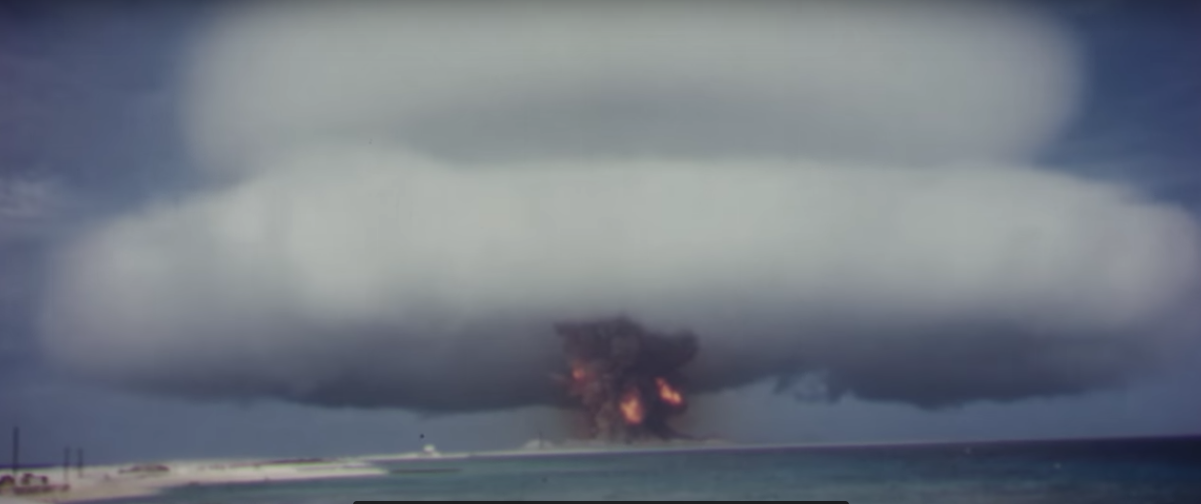A 1958 nuclear weapons test.
A major nuclear weapons lab released 200 declassified videos of Cold War nuclear test explosions on Thursday, relics of the 20th-century arms race between the US and Soviet Union.
From 1945 to 1962 the US performed 210 of these open-air nuclear explosions, starting with the Trinity test blast during World War II. They ended amid environmental concern over the spread of radioactive fallout worldwide from US and Soviet tests.
“Once the [bomb] yield was announced, they were supposed to be declassified," Lawrence Livermore National Laboratory (LLNL) nuclear weapons physicist Greg Spriggs told BuzzFeed News. “But they were just rotting away on shelves.”
The film release comes amid heightened worldwide concern over nuclear weapons, with Russia’s Vladimir Putin boasting last week of “unstoppable” nuclear cruise missiles, North Korea testing new bombs and missiles, and President Trump promising to beef up the US nuclear arsenal.
More than 5,500 high-speed films of the test blasts were made by nuclear weapons lab scientists to estimate the blast “yields” (the size of the explosion) during the Cold War. The 200 newly released films join two earlier releases, bringing the total number of declassified videos to 309 available on an LLNL YouTube channel.
The tests range in size from the five megaton Tewa test at Bikini Atoll in 1956 to the 0.2 kiloton Ruth test in 1953. The Ruth test embarrassed LLNL because it was one of their first test tests and it fizzled. About half of its drop tower was left standing after an undersized explosion, and reportedly, Los Alamos National Lab scientists sent a telegraph to the lab asking if they were done using the tower, because they wanted to use it next.
By the early 1960s, LLNL had effectively miniaturized warheads for submarine-launched Polaris missiles, the third leg of the “nuclear triad” now serving as the basis for US nuclear policy.
Spriggs began the formal process of declassifying the films in 2011, transferring films from Los Alamos to his lab. For physicists, they are a repository of data on how nuclear weapons explode in the atmosphere, helping to inform the computer code simulations now used in place of actual of weapons tests. The last underground US test blasts were halted in 1992 by the Comprehensive Test Ban Treaty.
Cold War nuclear physicists were “surprisingly good” at estimating the yield of the bombs from the films, Spriggs said. Relying on projections of the films over a grid to estimate blast sizes, only about 6% overestimate in their typical estimates of blast sizes. “That’s pretty good just estimating it by eye, from a grid,” he said.

Only films from seven blasts from the era of atmospheric testing remain classified, because their yield size was never released to the public. In order to release the films to the public, two experts with declassification and classification credentials needed to formally certify them as declassified, something that just wasn’t a priority in the midst of the Cold War.
Nuclear weapons effects were always intended as a declassified area of research, but the films were largely forgotten until now, Spriggs said. “They didn’t even have a projector to show them in the vault where they were sitting.”

